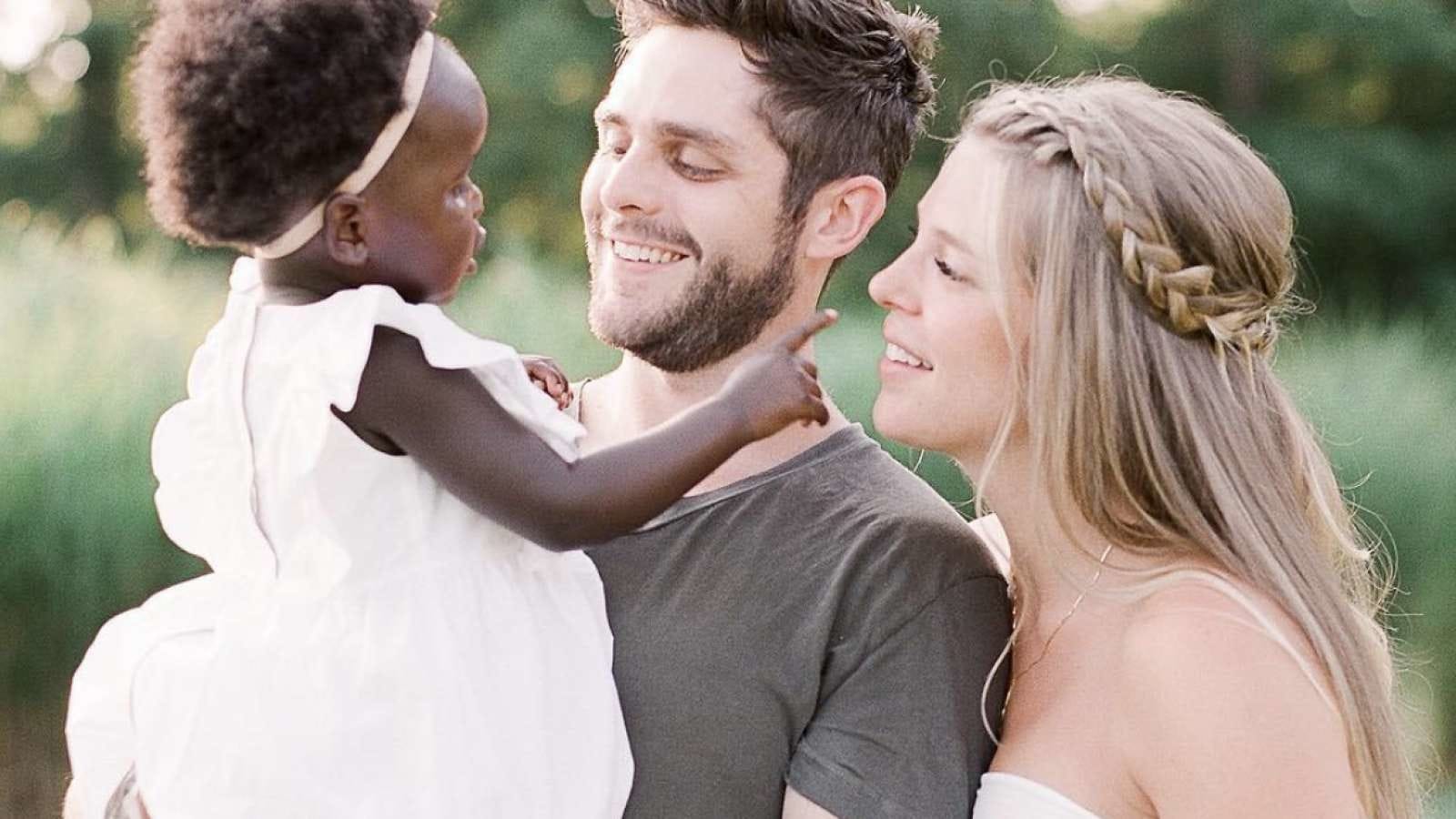Adoption is complicated—and the Myka Stauffer controversy proves it

Myka Stauffer
It was a feel good story. Until it turned into a cautionary tale.
Table of Contents
Moms turn to the internet for connection and a little bit of inspiration, but this week the internet is turning on a mom who built a brand on an adoption story. Adoption always carries trauma, but this case highlights how poor placements can multiply it for children who have already been through so much.
YouTube and Instagram star Myka Stauffer went viral in May after she and her husband James posted a video explaining that the son they adopted from China in 2017, 4-year-old Huxley, no longer lives with them. They were not his “forever family” they say, explaining that Huxley is now living with a new mom who can better care for his special needs, which include Autism. Stauffer’s four biological children remain in her home. The backlash that was swift and severe, with many internet commenters pointing out how the family profited from monetized YouTube videos featuring Huxley.
This week Stauffer posted a statement on the controversy, which reads (in part): “I’m sorry for the confusion, and pain I have caused, and I am sorry for not being able to tell more of my story from the beginning. I could have never anticipated the incidents which occurred on a private level to ever have happened, and I was trying my best to navigate the hardest thing I have ever been through.”
The statement comes after so much outrage about this case. but we have to look beyond the outrage. We have to look beyond a couple who took donations to fund a doomed international adoption that has become international news. As fellow moms it’s not enough to replay old videos, examining Stauffer’s relationship with Huxley—we have to examine our own relationships with stories like these.
Because this failed adoption is Huxley’s life story—but it wouldn’t have happened without the stories we tell ourselves about motherhood, America and whiteness.
What happened to Huxley?
What happened to Huxley? That was the question the Stauffers’ social media followers were asking in the weeks and days leading up to the tearful video announcement in which Myka and James told the world that they were no longer able to care for the preschooler who had been the focal point of so many of Myka’s vlogs, articles and Instagram posts.
What happened to Huxley isn’t a mystery—it was documented extensively in nearly real time—and it isn’t uncommon either. While the Stauffers have not yet responded to Motherly’s interview requests, three transnational adoption experts did.
The experts and the research tell us that plenty of kids who come to the United States via transnational adoptions end up not staying in the homes of their first adoptive parents. Second adoptions are surprisingly common, says JaeRan Kim, an Assistant Professor at the University of Washington, Tacoma in the Social Work program, but that doesn’t mean they’re not incredibly hard on children who have to lose everything they know—for the second, or third time in their short lives.
“I did a study of 20 inter-country adoptees who experienced some kinds of adoption displacement. Several of them had been adopted more than once by U.S. families. And it’s quite devastating,” Kim tells Motherly. “It is a lifelong trauma that they are constantly trying to negotiate in their lives and what it means for them, to be multiply abandoned.”
Kim—who identifies as a transracial adoptee as she was adopted from South Korea—explains that the Stauffers are hardly the first adopters to overestimate their ability to parent a traumatized child because they underestimate the trauma that precedes being made available to adopt.
“A lot of parents have good intentions, but they don’t understand the full scope of what it means to adopt a child,” Kim explains, adding that many mistakenly believe children will easily adjust once placed in a family.
Too often, the child is expected to seamlessly assimilate into families that don’t speak their language, or where complex relationships between siblings already exist. Add to that the myth of a color-blind America and these children can have a very tough time navigating family dynamics and developing healthy identities.
“But even if they do adjust, there may be lifelong lingering questions and concerns that they have that might make it difficult for them, just posing challenges,” she says.
Kim cautions against seeing international adoptions as “feel good projects”, but for people who donated to the Stauffers adoption fund and watched Huxley grow, this was a feel good story. Until it turned into a cautionary tale.
Why did this happen to Huxley, and to other children?
Elizabeth Raleigh is an associate professor of sociology at Carleton College and the author of Selling Transracial Adoption Families, Markets, and the Color Line.
Raleigh says that while many parents who adopt a child from another country or culture have good intentions, “good intentions don’t make something right.”
Some people adopt because they can’t or don’t have biological children. Others may feel called to adopt due to their faith or a longing to do good in the world and provide a child with the opportunity to live the American Dream. Prospective parents often start down the road with a desire to help a child, but end up in a system that is more focused on the needs of the adults involved.
“I view the Stauffer family case as part of a larger narrative of private adoption that frames the parent as the consumer and the child an object to be selected and then potentially discarded,” Raleigh tells Motherly.
“While social media certainly exacerbates the trend of centering the adoption storyline around the wants and desires of (usually white) adoptive parents, it is important to remember that this type of objectification has been going on for decades,” she explains, pointing out how, in 1998, a Vanity Fair writer joked that Chinese baby girls were “the season’s hot accessory in the Hamptons.”
Twenty-two years later, many outraged internet commenters are accusing the Stauffers of using Huxley as an accessory and also exploiting his special needs, as the family’s social media engagement was positively impacted by Huxley’s adoption. Myka Stauffer described Huxley as having autism spectrum disorder in an article she authored for The Bump, and in her YouTube videos. The Stauffers now say Huxley’s needs were beyond their capabilities.
“With international adoption, sometimes there’s unknowns and things that are not transparent on files and things like that,” James Stauffer said in the latest video on Myka’s account. “Once Huxley came home, there was a lot more special needs that we weren’t aware of and that we were not told.”
Raleigh says she doesn’t “pretend to know the Stauffer family’s motivations to adopt a child with so-called special needs,” but can say that in researching her book she found ” prospective parents got funneled into these types of placements, even if they were not adequately prepared for the challenges they entail” as adoption agencies are under pressure to place kids with complex needs.
“The narrative that positions adoptive parents as the heroes of the story while simultaneously treating children like accessories to be paraded around for status or likes is bad enough. This got compounded by the financial incentive among agencies to place children with parents who were not prepared,” Raleigh tells Motherly, adding that this mix created a recipe that made children vulnerable to trafficking and so-called rehoming, a term Raleigh objects to seeing used when referring to human children like Huxley.
How can we prevent this from happening to other children?
Zeina Ismail-Allouche has spent two decades in the field of child protection, with a focus on family separation and is currently finalizing her PhD at Concordia University.
She is frustrated by organizations placing children with under prepared adoptive parents rather than supporting the children to stay in their own community, and wants to see the story of adoption recentered on the needs of children and communities, not prospective parents.
Like many others in the movement, Ismail-Allouche says this case is an opportunity for well meaning people to shift fundraising efforts from crowdfunding international adoptions to supporting community-based efforts to “prevent separation by supporting mothers and families and communities at risk.”
Many children are not truly orphans, she explains, but simply born into poverty or nations in conflict, or are victims of racist government policies.
In order to break the cycle of family separation we need to stop prioritizing adoption and start prioritizing poverty reduction. But this means confronting the fact that white moms aren’t saviors more deserving of a baby than other mothers.
Changing the story of adoption
Huxley is beginning a new chapter in his life, with people his former parents say are better prepared to meet his needs. As his story spreads across seemingly every news site on the internet many people are also sharing stories of successful adoptions as a counter narrative to this tragedy. Certainly, adoption has a place in the world and can result in loving families and lasting bonds—but even when an adoption is child-centered and follows best practices it is important to recognize that a new family is being born out of trauma. When we ignore that we do everyone a disservice.
As mother Maria Confer previously wrote for Motherly, adoption is a trauma even a 4-day old baby can experience. Older children may have more tangible memories of losing everything they’ve ever known, and it is unfair of adults to expect a newborn baby or an older child to overcome that alone, without the help of adoption-informed psychologists and social workers.
As the research and lived experience of adoptees shows, there are multiple truths in the stories of adoption. They can be stories of hope and stories of trauma. They can be beautiful stories, but they are never easy stories.
[This post was originally published May 28, 2020. It has been updated.]





































